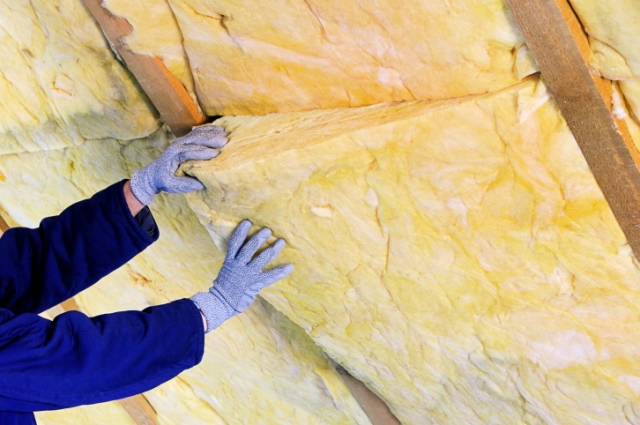There is more to indoor comfort than the performance of your furnace, heat pump or air conditioner. The condition of your attic, in particular the amount of attic insulation, also can have a significant effect on temperatures inside your home. In addition, attic insulation can influence how much you spend each month on air conditioning and how well your HVAC equipment works in general. The following brief overview can help you understand the importance of attic insulation and how you can keep your attic in prime condition.
Attic Insulation Benefits
The main purpose of insulation is to prevent the flow of heat. The physics of heat dictates that it naturally moves from warmer areas to colder areas. Insulation helps keep this from happening. Adequate levels of attic insulation keep heat from leaving the inside of your home in the colder months and prevents it from getting inside during the hotter months. Your home’s attic can be a significant source of both heat loss and heat gain. In the summer, attics can get extremely hot, especially if they are unfinished or uninsulated. This heat will radiate downward into your home’s main living areas, increasing the temperature throughout the structure. In the winter, heat rising from your home’s interior to the attic can escape from uninsulated walls, floors, and ceilings. When you install appropriate levels of insulation in your attic, you’ll see significant benefits such as:
Improved heating and cooling system performance.
Increases HVAC system efficiency.
Better indoor comfort and more consistent temperatures throughout your home.
Reductions in energy loss and heating and cooling expenses.
Less wear and tear on HVAC equipment.
What Type of Attic Insulation to Use?
Attics are usually insulated using one of two types of insulation — batt or blanket insulation and loose-fill insulation. Blanket or batt insulation is a common type of insulating material made from spun fiberglass or similar material. The insulation is collected into several layers that, when put together, resemble a thick blanket. A layer of heavy paper, cardboard or foil is also found on one or both sides of the insulation. You can find blanket insulation in large rolls of different widths that are easy to cut to size. Blanket insulation is usually placed between joists and beams in attic walls, floors and ceilings.
Loose-fill insulation is made from cellulose, foam or fiberglass, and is shaped into pellets that can be blown into empty spaces in attic walls and floors. This type of insulation is applied in large open areas or in attic spaces that are irregularly shaped or difficult to reach with other types of insulation. The pellets are easy to apply and create an even layer of high-quality insulation.
When choosing insulation for use in your home’s attic, pay particular attention to the material’s R-value. The R-value of insulation is an indicator of how well the insulation will resist the flow of heat. Higher R-values mean better heat resistance. In North Carolina, the U.S. Department of Energy recommends attic insulation with R-values between R-25 and R-60, depending on existing levels of insulation. Consult with your installer for more specifics on insulation type and R-value.
Considerations for Installing Attic Insulation
Blanket insulation is usually installed between beams, studs and joists in attic walls and ceilings. This type of insulation is sometimes installed perpendicular to the joists in attic floors. Remember that some types of insulation could be a fire hazard if they touch light fixtures, electric outlets or vents. Use wire mesh or sheet metal to fabricate barriers between the insulation and these types of hazards. Ask your installer if the fixtures in your attic are rated IC for “insulation contact.” These types of fixtures are designed to be safe even if they make contact with insulation.
Do It Yourself vs. Hiring an Installer Attic
insulation can be a project for a do-it-yourselfer, but in most cases, the better option is to hire a professional installer. Working in attics can be cramped, uncomfortable and physically demanding. Protective equipment such as eye protection, heavy gloves and respirators should be worn when handling insulation. Consider leaving these jobs to professional installers who have the skills and equipment to do the job properly.
Gentry Service Group serves customers in Hendersonville, NC, and surrounding areas. Contact us today at (828) 581-4045 for more information on attic insulation and how attic insulation can improve indoor comfort levels and HVAC system efficiency.
Image provided by Shutterstock


